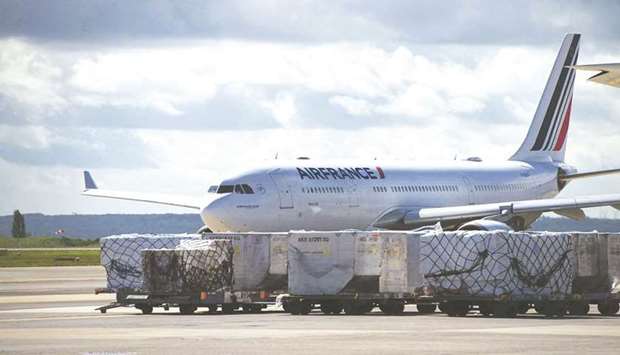Amid the pandemic-induced challenges, it has been a very good first half for global air cargo, which registered a growth of 8%, its strongest half-yearly performance since 2017.
Cargo has been performing very strongly, reveal data with the International Air Transport Association. In the first half of 2021, cargo tonne-kilometres were up 8% compared to 2019. And for June, it was nearly 10% up on 2019.
Supply chain conditions remain favourable, with low inventories-to-sales ratio, resilient demand for goods and more affordable air cargo compared to container shipping, all combining to make air cargo a competitive mode of transport.
Besides, the shift of consumer spending from goods to services has so far not been as strong as feared.
So cargo is leading the way in terms of recovery. This strong performance demonstrates how critical cargo is to keeping global supply chains moving at the moment.
The airline industry has been able to pivot their passenger operations to supply cargo capacity, particularly at a time when cargo travelling by sea has seen significant disruption.
The cost-competitiveness and reliability of air cargo relative to that of container shipping has improved. The average price of air cargo relative to shipping has reduced considerably.
And scheduling reliability of ocean carriers has dropped, in May it was around 40% compared to 70-80% prior to the crisis.
Regional variations in performance are significant.
North American carriers contributed 5.9 percentage points (ppts) to the 9.9% growth rate in June.
Middle East carriers contributed 2.1 ppts, European airlines 1.6 ppts, African airlines 0.5 ppts and Asia-Pacific carriers 0.3 ppts. Latin American carriers did not support the growth, shaving 0.5 ppts off the total.
However, overall capacity, measured in available cargo tonne-kilometres (ACTKs), remained constrained at 10.8% below pre-Covid-19 levels (June 2019) due to the ongoing grounding of passenger aircraft.
Belly capacity was down 38.9% on June 2019 levels, partially offset by a 29.7% increase in dedicated freighter capacity.
Middle Eastern carriers posted a 17.1% rise in international cargo volumes in June compared with the corresponding period in 2019, boosted by strong performances on the Middle East to Asia and Middle East to North America trade routes.
International capacity in June was down 9% compared to the same month in 2019. Looking ahead, IATA analysts say shippers and businesses are likely to face strong demand when the peak cargo season starts around October.
With inventories at low levels and congested supply chains, some firms may anticipate and attempt to refill stocks ahead of that period, which would boost CTKs growth again.
Manufacturing Purchasing Managers Indices (PMIs) also point to ongoing strong air cargo traffic growth. New export orders PMIs – strongly correlated with growth in CTKs – are above the 50 line consistent with month-on-month expansion in most key markets. In June, they were still increasing – meaning that new export orders growth accelerates – in economies such as China, South Korea or Germany. This suggests that the shift of consumers from goods to services has so far not been as strong as feared. While air cargo supply chains are not exempt from their own difficulties, container shipping remains severely congested. This is exemplified by limited operations at several Chinese ports in June, a disruption which is greater than that caused by the Suez Canal closure.
In May already, schedule reliability of ocean carriers was around 40%, compared to 70-80% prior to the crisis, according to Sea-Intelligence. On top of making the speed of air cargo more attractive, this also means fares for container shipping have significantly increased. In turns, air cargo fares, which were more than 80% higher than pre-crisis values in June have become relatively lower.
The ratio of prices continued to fall in June, adding to the competitive advantage of air cargo.
With the expected ongoing return of passenger aircraft belly capacity, it is likely that the slow upward trend in air cargo capacity will continue in the coming months.
This will put downward pressures on air cargo fares and make it easier to meet demand, in another positive sign for CTKs in the near future.
“Air cargo is doing brisk business as the global economy continues its recovery from the Covid-19 crisis. With first-half demand 8% above pre-crisis levels, air cargo is a revenue lifeline for many airlines as they struggle with border closures that continue to devastate the international passenger business. Importantly, the strong first-half performance looks set to continue,” said Willie Walsh, IATA’s director general.
* Pratap John is Business Editor at Gulf Times. Twitter handle: @PratapJohn

Cargo on trolleys beside an Airbus SE A330 passenger aircraft, operated by Air France-KLM, at Charles de Gaulle airport in Roissy, France. Amid the pandemic-induced challenges, it has been a very good first half for global air cargo, which registered a growth of 8%, its strongest half-yearly performance since 2017.


